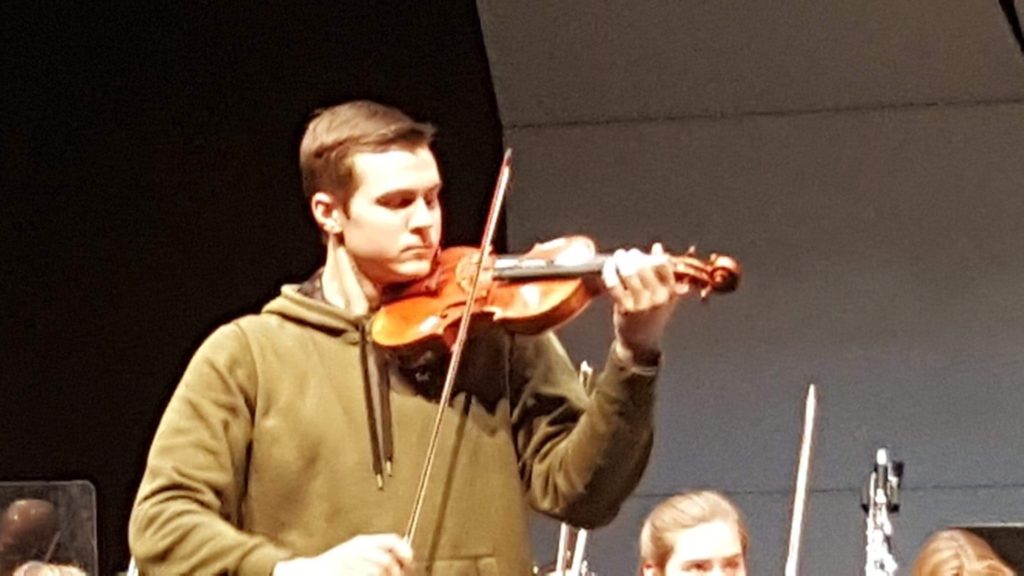
If you walk into the lowest floor of the Howard Music Hall on a weekday, you may occasionally hear a young student bowing through “Twinkle Twinkle Little Star” on a violin, accompanied by a college-age instructor.
One of these instructors, senior Josh Brown, teaches 12 beginner violinists at the Howard Music Hall and at Gier Elementary School in Hillsdale. Brown’s students are generally children ages 5 through 8 years old, which he says brings both blessings and challenges.
“Younger children are usually easier to teach due to having no preconceived notions of what it means to play the violin,” Brown said. “The biggest challenge, however, is understanding and adapting to each student’s individual learning style.”
Junior Keely Rendle first learned violin through the Suzuki Method, a teaching approach that applies the concept of learning a language or native tongue to recognizing the noises and sounds of a violin. Rendle teaches three students, two on campus. She also works as an observer and assistant to senior Laura Salo who teaches a Suzuki class to local children.
Both Brown and Rendle first got involved in teaching through Melissa Knecht, professor of music. Rendle began teaching violin last spring as a sophomore, and Brown began teaching during his junior year.
“I really enjoyed it from the beginning as a fun outlet,” Brown said. “Teaching violin to students adds an entirely new dimension to the instrument that I had not considered.”
Most lessons for beginning violinists last about a half hour.
“For myself, I did not start doing lessons lasting forty-five minutes to an hour until my sophomore year of high school,” Rendle said.
The time length can pose some challenges depending on the attention span of the students, so instructors will sometimes introduce games to break up the monotony.
“For some younger children, this can be a challenge,” Brown said. “I’ll sometimes try and change things up with a game or having them step away for a few minutes to come back with a fresh mindset.”
Salo agreed that it’s good to be creative in helping students learn.
“Remember that every student is an individual,” she said. “What worked for one student might not work for another student. However, I have never met a student who couldn’t learn. So there is a way to teach every student, you just have to find that way.”
Of course, the job can be difficult some days.
“There are moments that are challenging when you wonder if you have done a good job with a student,” Rendle said.
However, Rendle added the experience is beyond rewarding. One moment in particular stood out for her when an adult student thanked her and expressed appreciation for her instruction. “Those moments are encouraging,” Rendle said. “It’s fun when I see a student make progress and they enjoy it.”
“I would tell someone interested in teaching violin to enjoy the lessons they teach. If they are having fun, their student will also have fun,” Salo explained.“
Brown agreed.
“It has to come from a place of wanting to help young people learn,” he said. “The biggest joy comes from watching students struggle with something and then it clicks — that moment of clarity. If you do it because you enjoy seeing the process, it is very rewarding.”

